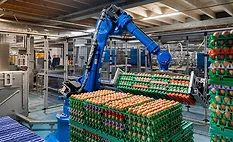
HACCP
Hazard Analysis and Critical Control Points (HACCP) is a management system in which food safety is addressed through the analysis and control of microbiological, chemical, and physical hazards from raw material production, procurement, and handling, to manufacturing, distribution, and consumption of finished products.
Articles
More ArticlesNever miss the latest news and trends driving the food safety industry
eNewsletter | Website | eMagazine
JOIN TODAY!Copyright ©2025. All Rights Reserved BNP Media.
Design, CMS, Hosting & Web Development :: ePublishing


